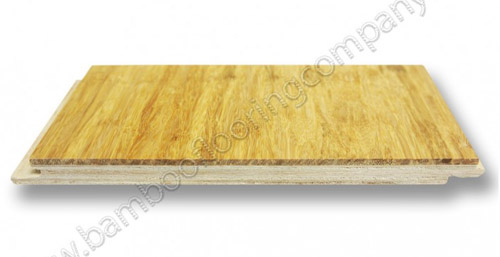1. What type of room is the bamboo floor going into?
Bamboo flooring is a very versatile and durable product so is ideal for most rooms in your house and becoming a popular choice for hallways, living areas and bedrooms. Both solid bamboo flooring and engineered bamboo flooring are dimensionally stable so can be used in rooms where humidity and temperature fluctuates, such as kitchens, utility rooms, conservatories and rooms with log burners. This is because the floor will expand and contract to allow for the changes in climate. The only room that bamboo flooring is not recommended for is a bathroom because although the floor is water resistant to a certain extent, it is not waterproof.
2. What is the existing subfloor?
The existing subfloor is the base floor that is already in your property. The most common types of subfloor are: wooden floor boards, wooden joists, plywood or chipboard, concrete, asphalt and bitumen. Before installing your bamboo, you must ensure that the subfloor is flat, level and dry, otherwise the flooring can become damaged once it is laid. The method of installation will vary depending on the type of subfloor that you have so it is always best to check with an expert or professional floor fitter before the floor is fitted.

3. What level of traffic is expected in the room?
Bamboo flooring is very durable and hardwearing, but different styles of flooring do have different strengths. If the level of traffic is expected to be high, for example a hallway, kitchen or commercial property, then strand woven bamboo flooring would be the best option as it is over twice as hard as horizontal and vertical bamboo.
4. Do you want or already have under floor heating?
Both engineered and solid bamboo flooring are compatible with underfloor heating as they are dimensionally stable, so they will expand and contract with the temperature changes. It is advisable to check with your flooring supplier that the manufacturer has tested the floor with underfloor heating, to ensure it is suitable.
5. What budget do you have?
Bamboo flooring is an inexpensive, quality alternative to hardwood flooring and can be found at around a third of the price. The price for bamboo flooring does vary depending of the constructions of the plank, the fitting system and the finish that has been applied. For example, engineered strand woven bamboo flooring with a click fitting system and an anti-slip lacquer will be more expensive than horizontal bamboo flooring with a tongue and groove fitting system and standard lacquer.

6. What style and colour of flooring are you looking for?
Bamboo flooring is available in three main styles: horizontal, vertical and strand woven. Horizontal bamboo has a more evident, wider grain on the surface of the plank. Vertical bamboo has a much thinner grain on the surface, and strand woven has a random grain appearance. In addition to the three different structures, bamboo flooring is available in either a natural colour (pale, golden tones), a carbonised effect (darker brown tones) or a rustic effect (a more traditional look). As bamboo is a natural product, shades and grain patterns will vary slightly. If you wanted to achieve a unique look, then different colour stains can be added to the bamboo flooring, including, white, chocolate and black.


7. What type of flooring finish do you want to achieve?
Bamboo flooring is available in two main finishes:
• Satin-matt lacquers
• Anti-slip lacquers
8. How eco-friendly is bamboo flooring?
Bamboo flooring is an eco-friendly and sustainable alternative to hardwood flooring. Bamboo is actually a grass (not wood), meaning that it grows much faster and reaches maturity at 5 years, rather than over 20 years for trees to be harvested. As it is a grass, it is a renewable product because the root will continue to grow after it has been cut down, meaning that bamboo plants do not need to be re-planted. To ensure that the forest is not completely harvested after each 5 year cycle, it is colour coded and only crops of a mature age are cut down. To check that bamboo flooring is truly eco-friendly, the company selling the flooring should have Forest Stewardship Council (FSC) certification. This means that every company involved in the chain of production and manufacture of the bamboo flooring have also been awarded an FSC certificate. The FSC are a global organisation dedicated to responsible management of the world’s forests. They ensure that the harvesting process of bamboo (or timber) will maintain the natural biodiversity and ecological processes of the forest.

9. Do you want matching flooring accessories?
Bamboo flooring accessories are available to match most bamboo flooring choices. Accessories include: skirting, beading, pipe covers, flush reducers, stair nosing, and thresholds.
10. What are the benefits of bamboo flooring?
• Bamboo flooring has many benefits, including:
• Available in a wide variety of styles, colours and finishes
• Eco-friendly and sustainable flooring material
• Cheaper alternative to hardwood flooring with the same natural appeal
• Harder and more durable than most hardwood flooring
• Can be installed in almost any room
• Quick and easy to install over almost any subfloor
• Compatible with underfloor heating
• Easy to look clean and maintain
• Hygienic and great for allergy sufferers








